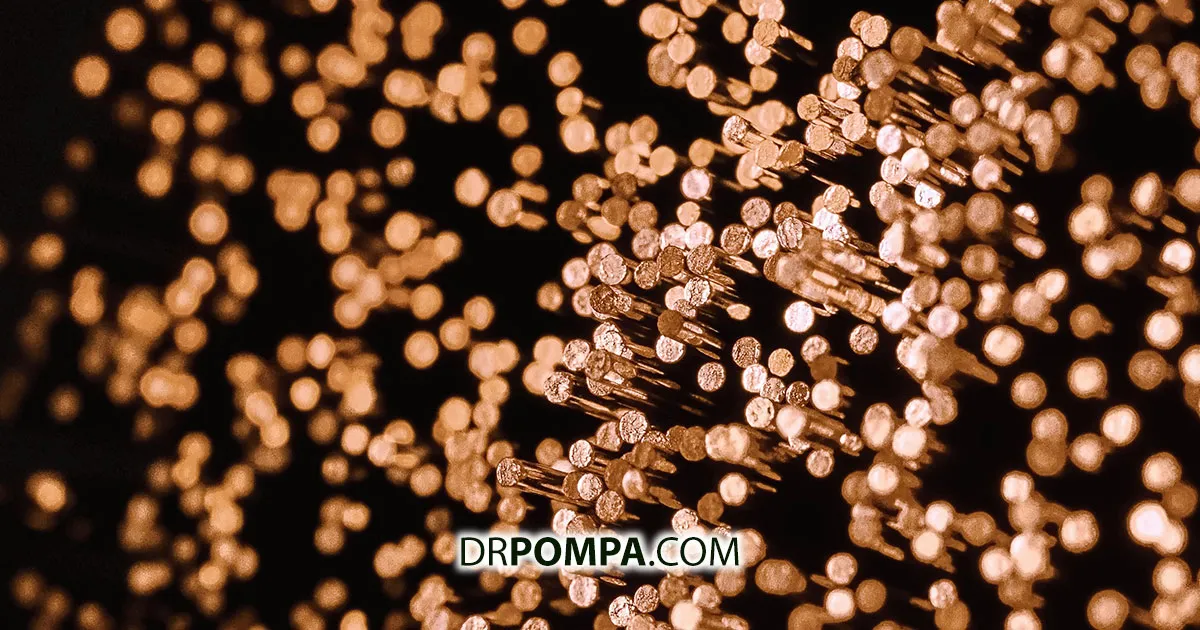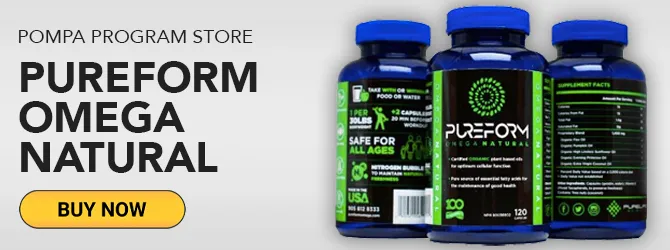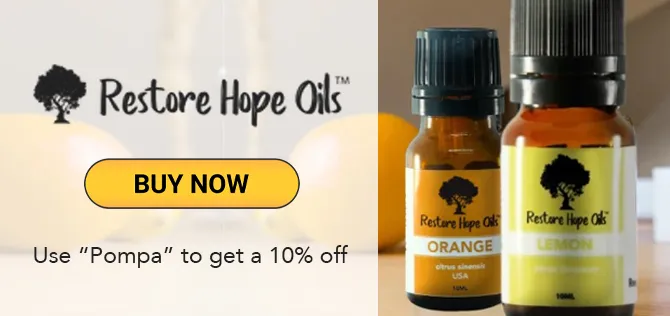Hidden Toxins: Whether you’re healthy or not: this article will give you actionable tools you can start implementing today to transform your life. We touch on copper, iron, and parasites: three things that are a part of human life but need to be kept in check if you want to thrive. You are not going to want to miss this one!
Watch more here:
This article has been medically reviewed by Dr. Charles Penick, MD
Hidden Toxins: Copper Toxicity
You’ve probably heard of mercury or lead toxicity, but what about copper? Indeed, copper toxicity is real and maybe a missing link in the holistic picture of your overall health. When you have dysregulated hormones, copper is something you have to explore. Copper is related to estrogen in the same way zinc is related to progesterone.
Not all copper is bad; in fact, it is an essential trace mineral necessary for your survival. Copper is found in every tissue in your body, and it plays a role in making red blood cells and maintaining nerve cells and the immune system. It also helps the body form collagen and absorb iron and plays a role in energy production 2. Sources of organic copper include avocados, nuts, seeds, tea, and cacao.
As such, copper is a double-edged sword. Bioavailable copper helps the body, while synthetic or inorganic copper can build up and become harmful to the body 3. One of the reasons why copper toxicity is common is the fact that two-thirds of household pipes are made of inorganic copper. As water traverses the pipes, it picks up this toxic copper, which starts to accumulate in your body. Two other common sources of poisonous copper are dental fillings (compounded by other toxins like mercury) and the copper IUD.
The result of too much copper is bioaccumulation in the brain, which leads to all kinds of neurotransmitter issues and diseases 4. One common concern is neurodegenerative diseases like Alzheimer’s, ALS, and Parkinson’s.
Despite the severity of copper toxicity, the solution is quite simple. Preventative measures can be made by mitigating any copper exposure that is not food-based. This includes avoiding any copper in your vitamins (which is generally synthetic), as well as getting a proper water filter for your home (like a reverse osmosis filter). Two other important ways to reduce copper exposure are getting any copper mercury fillings removed and a copper IUD.
Copper is also antagonistic to many other nutrients, including zinc, manganese, vitamin C, lithium orotate, and Resveratrol. So consuming these nutrients in abundance will help excrete excess copper from the body 5-6.
To test your copper levels, either a tissue (hair) mineral analysis or an Oligo Scan Test. The problem with hair analysis is that many people have heavy metal toxicity stored away, so it doesn’t appear in the test. Challenging the copper out of the body can place a heavy burden on the liver. Oligo Scans are non-invasive but reliable for copper levels.
Hidden Toxins: Iron Toxicity
Iron is a mineral that the body needs for growth and development. In addition, your body uses iron to make hemoglobin, which is a protein in red blood cells that carries oxygen from the lungs throughout the body, as well as myoglobin, a protein that provides oxygen to muscles. Your body also needs iron to make some hormones 7.
Like copper, iron is a double-edged sword. Although we need it to survive, too much can be detrimental to your wellbeing.
Higher than normal iron levels are associated with various conditions, including: 8
- Hemochromatosis
- Porphyria — A group of disorders caused by an enzyme deficiency that affects your nervous system and skin
- Rheumatoid arthritis or another chronic inflammatory disorder
- Liver disease
- Hyperthyroidism
- Leukemia
- Hodgkin's lymphoma
- Alcohol abuse
As a high catalyst for oxidative stress, high iron levels are also extremely aging. So are you interested in keeping your youthful glow? Avoid stockpiling iron in your blood!
The best way to reduce iron levels is by donating blood. This happens naturally for women who menstruate, but if you are a man or a woman over 40, you can donate blood to keep your iron from accumulating toxic levels.
Some foods inhibit iron absorption, including tea and red wine 9. If you are prone to high iron levels or eat a lot of red meat, consider combining your meal with tea or wine to help prevent absorbing too much iron. Avoid all iron supplements, as well as cooking with cast-iron cookware.
Another great way to tank your iron levels if they are too high is simply to water fast! 10
You can test iron levels by taking a Ferritin test, which tests for bound iron levels. If it’s above 100 mg/ ML, your levels are too high. Note that what is considered “normal” levels for many (which can be upwards of 300 mg/ML) is simply terrible advice 8. Baseline measurements for “average” or “normal” are not what you want to aim for in a generally sick population. Blue zone populations of the world who have the longest lifespan hover at ferritin levels between 50 and 70 11. So if your levels are higher than 100, you may consider donating blood!
Hidden Toxins: Parasites
Although many people associate parasite exposure to third-world countries, the reality is parasitic infections are widespread in America. Millions of Americans develop parasitic infections, and the symptoms often go unnoticed or are misdiagnosed. The most common way to pick up parasites is through food and water. A parasitic infection can lead to serious health problems, including seizures, blindness, pregnancy complications, heart failure, and death 12.
The most common parasitic infections in the USA are: 13
- Chagas disease
- Cyclosporiasis
- Cysticercosis
- Toxocariasis
- Toxoplasmosis
- Trichomoniasis
Like iron and copper, parasites are a part of life. The human microbiome is full of bacteria, and we are exposed to parasites constantly. Keeping a balance between the good and the bad is critical, so a parasite cleanse can be performed once or twice a year to keep things in balance. Some individuals are achieving great results by using animal parasitic products like Panacur C as well as Ivermectin.
Hidden Toxins: Summary
Three common sources of health problems that aren’t often discussed are parasites and iron and copper toxicity. These are three pieces of the health puzzle that all humans should explore if they are interested in living a long and healthy life. All three of these “problems” are also a part of life, and balance is vital.
Medical Disclaimer: This article is based upon the opinions of Dr. Daniel Pompa. The information on this website is not intended to replace a one-on-one relationship with a qualified health care professional and is not intended as medical advice. It is intended as a sharing of knowledge and information from the research and experience of Dr. Pompa and his associates. This article has been medically reviewed by Dr. Charles Penick, MD for accuracy of the information provided, but Dr. Pompa encourages you to make your own health care decisions based upon your research and in partnership with a qualified health care professional.
References
1 Mehta, S W, and R Eikum. “Effect of estrogen on serum and tissue levels of copper and zinc.” Advances in experimental medicine and biology vol. 258 (1989): 155-62. doi:10.1007/978-1-4613-0537-8_13
2 “Office of Dietary Supplements – Copper.” NIH Office of Dietary Supplements, U.S. Department of Health and Human Services, ods.od.nih.gov/factsheets/Copper-HealthProfessional/.
3 Keenan, Joanne et al. “Acute exposure to organic and inorganic sources of copper: Differential response in intestinal cell lines.” Food science & nutrition vol. 6,8 2499-2514. 20 Oct. 2018, doi:10.1002/fsn3.857
4 Desai, Vishal, and Stephen G Kaler. “Role of Copper in Human Neurological Disorders.” The American Journal of Clinical Nutrition, vol. 88, no. 3, 2008, doi:10.1093/ajcn/88.3.855s.
5 Salehi, Bahare et al. “Resveratrol: A Double-Edged Sword in Health Benefits.” Biomedicines vol. 6,3 91. 9 Sep. 2018, doi:10.3390/biomedicines6030091
6 Mills, C F. “Metabolic interactions of copper with other trace elements.” Ciba Foundation symposium vol. 79 (1980): 49-69. doi:10.1002/9780470720622.ch4
7 “Office of Dietary Supplements – Iron.” NIH Office of Dietary Supplements, U.S. Department of Health and Human Services, ods.od.nih.gov/factsheets/Iron-Consumer/.
8 “Ferritin Test.” Mayo Clinic, Mayo Foundation for Medical Education and Research, 28 Nov. 2019, www.mayoclinic.org/tests-procedures/ferritin-test/about/pac-20384928.
9 Hallberg, L, and L Rossander. “Effect of different drinks on the absorption of non-heme iron from composite meals.” Human nutrition. Applied nutrition vol. 36,2 (1982): 116-23.
10 Wojciak, Rafal W. “Effect of short-term food restriction on iron metabolism, relative well-being and depression symptoms in healthy women.” Eating and weight disorders : EWD vol. 19,3 (2014): 321-7. doi:10.1007/s40519-013-0091-2
11 Buettner, Dan. The Blue Zones: 9 Lessons for Living Longer from the People Who’ve Lived the Longest. National Geographic, 2012.
12 “CDC Warns of Common Parasites Plaguing Millions in the U.S.” CBS News, CBS Interactive, 8 May 2014, www.cbsnews.com/news/parasites-causing-infections-in-the-us-cdc-says/.
13 “CDC – Parasites – Neglected Parasitic Infections (NPIs) in the United States.” Centers for Disease Control and Prevention, Centers for Disease Control and Prevention, 20 Nov. 2020, www.cdc.gov/parasites/npi/index.html.












